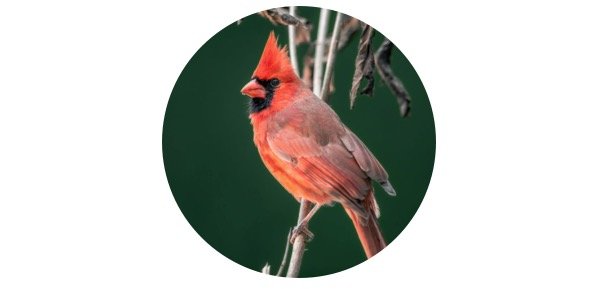How To Attract Bluebirds To Your Yard: 10 Tips & 4 Things to Avoid
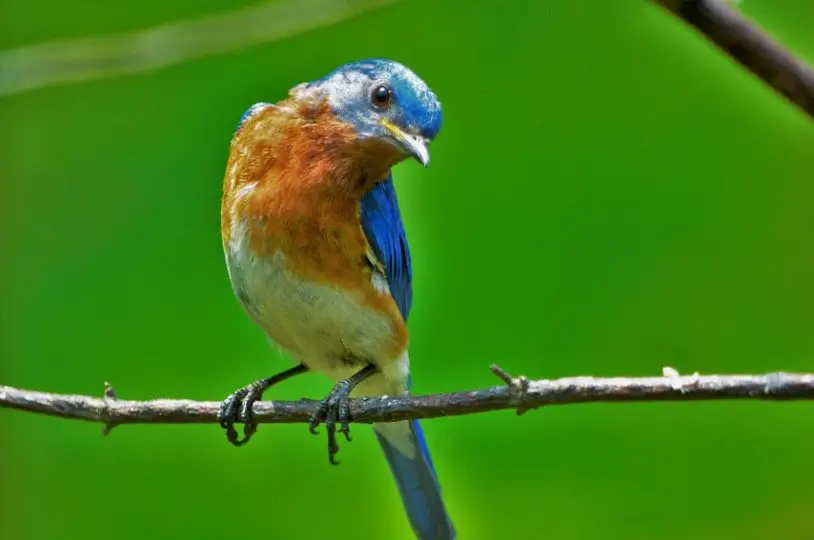
Bluebirds are one of the most beautiful birds you can welcome into your yard, but they’re also one of the most challenging to attract and keep happy in their new home. Luckily, there are plenty of bluebird-attracting tips you can use to entice them into your yard and keep them from seeking out more ideal spots elsewhere.
Below are 10 proven ways to attract bluebirds into your yard, and 3 things to avoid, keeping them happy so they will stick around for years to come.
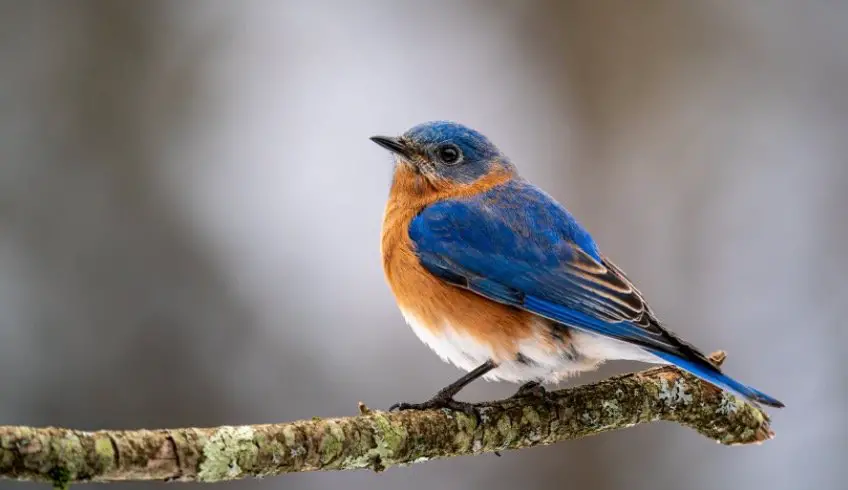
i. Install a hunting perch
Bluebirds love flying and perching in open areas. If you have any open space near perches, they love it. They find several high vantage places and search insects from there. They come to the ground and grab the insect or other meal after spotting it from above.
Shrubs, trees, lower branches, and fences are used by bluebirds to search for their meal. You can install hunting perches in your yard to attract these birds and make them friendly. The height of the perch should be around 3-4 feet high.
For example, fences and birdies scavenge are suitable for this purpose. You can also use 6 to 6.75 feet high poles to make perches if trees are not found there. Make the poles T-shaped to make them a perfect perching site for bluebirds.
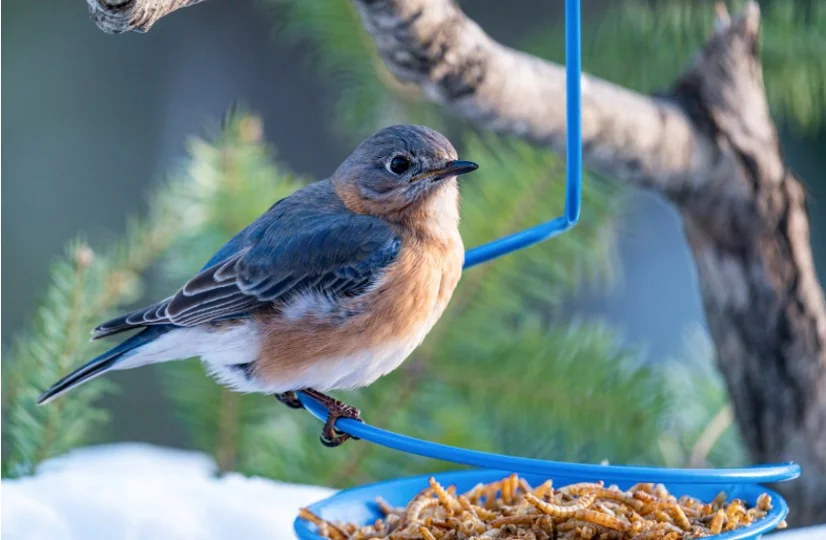
ii. Tempt with live mealworms
As discussed above, most of the diet of mealworms is made of insects and worms. To attract bluebirds in your garden, you can offer them live mealworms in the feeder or a shallow dish. The location of the feeder should not be too close to the nest box. If the feeder is installed near the nest box, the predators get attracted easily.
During their nesting season, the hatchlings of bluebirds require a lot of protein, so they eat different insects to fulfill their protein need. In case of scarcity of mealworms, berries can be offered to the birds.
Several berries such as holly, sumac, and elderberry are loved by bluebirds. These berry shrubs can be grown easily in the yard and the birds can also get fresh, ripe berries this way. Suet in form of shreds and crumbles are also helpful to attract bluebirds in the yard.
iii. Play a Recorded Bluebird Song
Playing a recorded bluebird song is another way for attracting bluebirds. You can use this method to attract bluebirds in your yard from your neighborhood.
However, don’t use this trick very much particularly during the nesting season because during this period, they have to do many essential activities such as taking care of babies, guarding their nest, and getting food and the recorded sound could draw them away from these activities.
Playing the sound repeatedly can interfere with their survival and behavior. The practice could also disturb them by increasing stress in bluebirds because the female bluebirds make chirping sounds repeatedly when they see a predator around them.
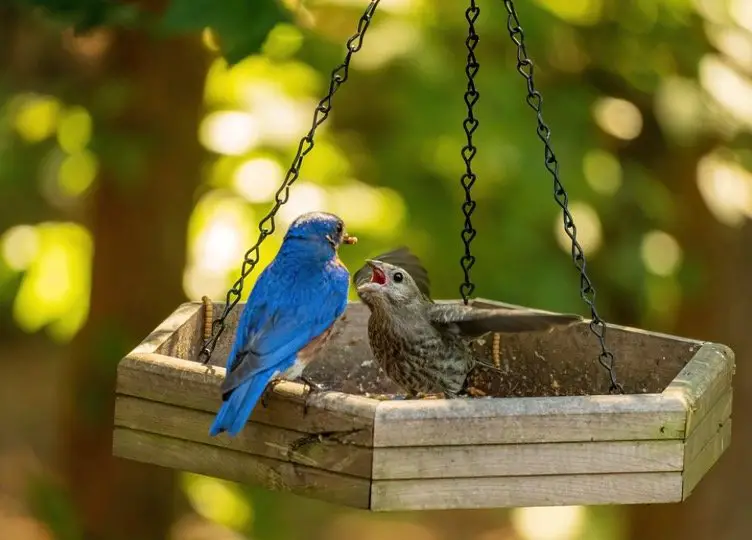
iv. Use bluebird specific feeders
The feeders made for bluebirds should be specific with a large roof and the entrance hole of the feeder should be relatively small. Ensure the capacity of the feeder while purchasing a feeder from the market. The feeder should be capable to fill with live mealworms.
The large roof feeders help protect it from rain. Also, make sure that the birdfeeder you are buying for bluebirds should be squirrel proof to protect food. It is also important that the bluebirds are especially attracted to blue color. Thus, if you are trying to entice bluebirds, it is very helpful to install a birdhouse.
Also note that if the birds find the place uncomfortable and unsafe, they become pesky. So, if you want to welcome bluebirds in your garden, keep other predatory animals such as squirrels, cats, and raccoons away from the area.
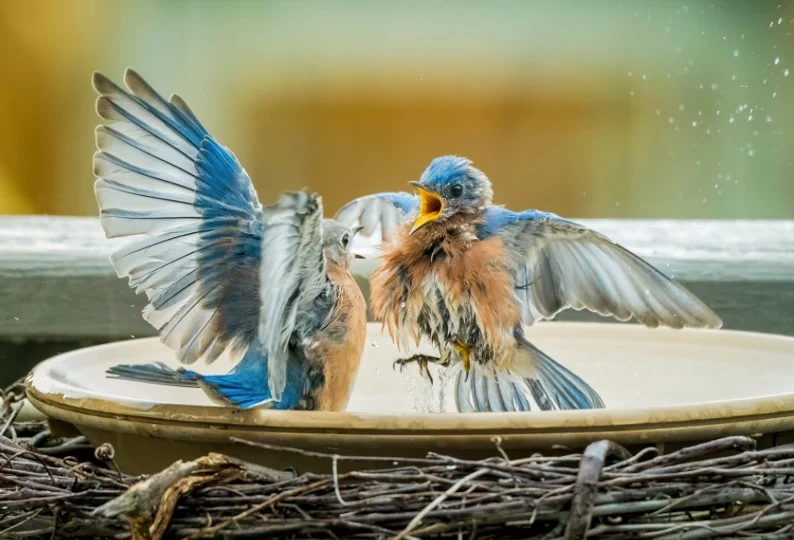
v. Add a birdbath
Since all the birds require water and it is one of their crucial needs for drinking and maintaining their feathers, the birdbaths are a very good option for attracting bluebirds. They can also get drinking from the birdbath and the sound of moving water especially attract these birds.
If you are trying to entice bluebirds in your yard, you can install a small dripper or fountain in the garden. The birds like the glittering sparkles and splashing sounds of the moving water and more likely they flock around the garden if you install a fountain in the yard.
However, the size of the birdbath should be large enough where more than five birds can take bathe at a time. You can also install a heater in the birdbath during winters if your house is located on the Northern side and the weather of the area experiences very cold and freezing temperatures during winters.
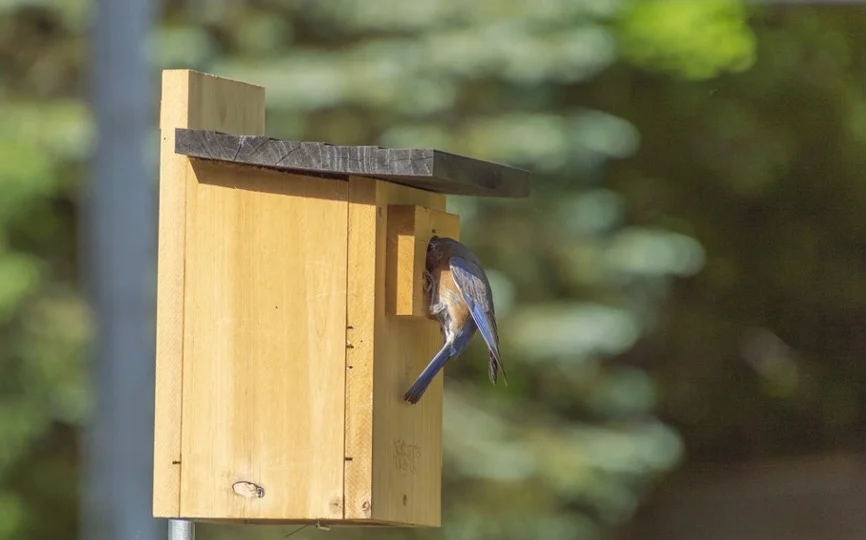
vi. Install a Nest box
Generally, the birds build their nests in natural cavities. They also use holes made by woodpeckers for making nests. Bluebirds also use wooden birdhouses provided by humans and some specially designed nestbox for bluebirds are also available in the market that you can use for bluebirds.
The position of the box should be appropriate. The box should be placed at the height of 4-7 feet and the entrance hole of the nest should be east facing. The location of the box is key to making the birds come over to your yard regularly. The nestbox will get morning sun by facing it towards the east and also avoid heat and winds.
Leave the nest box year-round after installing it in the yard. The birds flock to find nests and nesting sites during spring and probably if they find your nest box in your yard, they stay there throughout the winters.
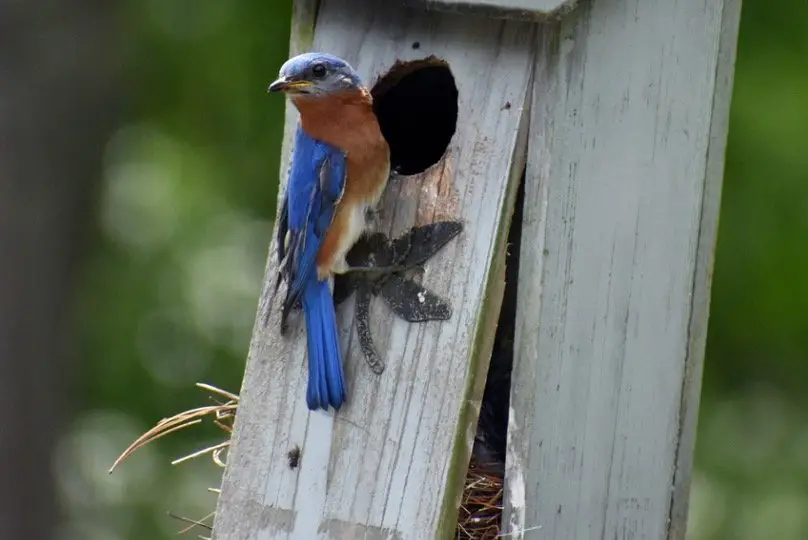
vii. Provide nesting material
Bluebirds love to collect nesting materials when they use tree cavities for making nests. So providing them nesting material will attract bluebirds in your yard. The birds prefer to collect pine needles and soft grasses especially and you can also offer cotton scraps and pine needles to the bluebirds.
Placing some pine trees around the yard can also be helpful and you can also place some pine needles inside the box and on the ground. These materials will attract bluebirds and they will start visiting the nest and the yard.
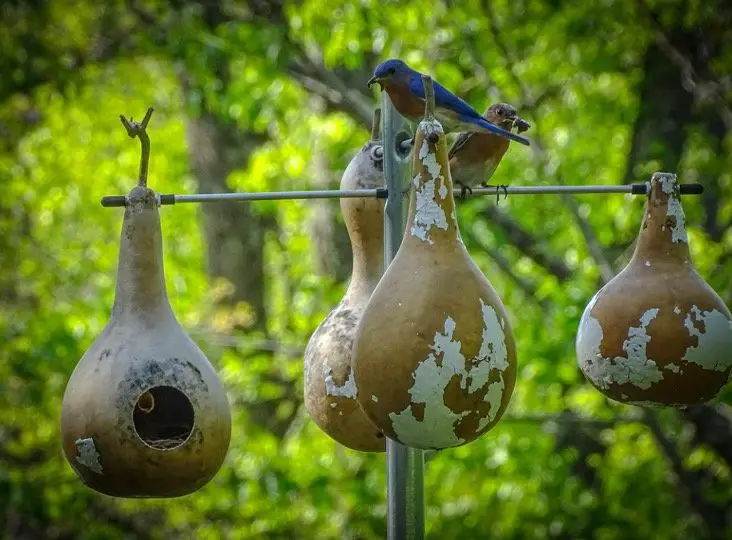
viii. Provide natural shelter
Bluebirds love to live in natural places. Mature and widely spaced trees are preferred by bluebirds to live in. Thus, if the yard has a dense area of plants, the birds probably visit there. Do not cut the mature trees, if you have them in your yard and you can also grow berry bushes in the yard if you do not have mature trees.
As discussed above, berries are a favorite food of bluebirds so the bushes provide nesting sites to the birds and they can also get food from the plants. To protect bluebirds from the cold breeze and freezing temperatures during winters, install roosting boxes in the yard.
ix. Eliminate common threats
According to a record, around 3.7 billion bluebirds are killed by cats every year. The critter animal more likely attacks on new nestlings of bluebirds. Thus, it is very essential to keep the cats away from the yard and the nesting site, if you are trying to attract bluebirds in your garden.
As discussed above, the birds become pesky when they feel discomfort or they have any doubt over their safety in an area. The birds fly away from a place if they find it unsafe. Houseful sparrows are another common threat for the birds that create a stressful situation for the birds.
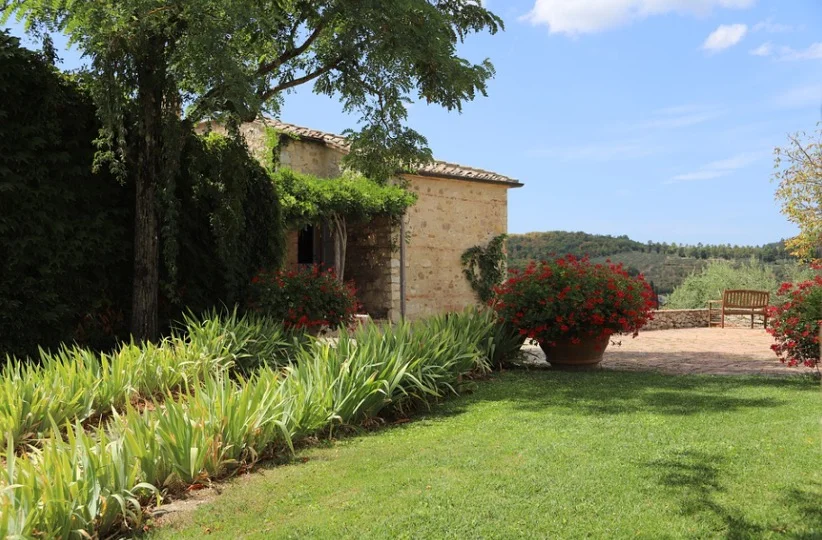
x. Plant native plants
Besides insects, berries and other fruits are the favorite food items of bluebirds, especially during winters. Thus, planting some berry-producing shrubs and trees is the best way to attract bluebirds to your yard.
Berries and fruits of sumac, red cedar, elderberry, hackberry, blueberry, dogwood, Virginia creeper, and bayberry are loved by bluebirds and they enjoy eating them. However, the trees of these berries should be placed in different locations in the yard.
You can also grow a herbaceous flowerbed and create a grassy lawn by growing the trees in a scattered way in the yard to make it more beautiful and it will also help you to make an attractive habitat for the birds.
3 Things to Avoid
Adding appealing elements to your yard isn’t the only thing you can do to attract bluebirds to your yard. There are also a few things you can avoid to make your property safer, ensuring many return visits by your bluebirds friends.
i. Don’t use pesticides
Your backyard may seem like a sanctuary for wild birds, but it’s important to realize that you share your space with both beneficial and harmful critters. Beneficial insects such as bees and spiders help support natural plant growth by pollinating them.
On the other hand, plants are plagued by bugs and pests that can drastically reduce their health and ultimately lead to death. Many of these garden-ruining insects (such as aphids, caterpillars, beetles) can be safely removed without using harmful pesticides; if you aren’t sure what you’re dealing with, reach out to your local chapter of Audubon Society or Friends of Nature.
ii. Don’t let Feeders Get Empty
It’s easy to forget about your feeders when you aren’t actively using them, but if you stop filling them up, bluebirds will quickly notice. With no food at hand, they won’t be as attracted to your yard and eventually may go elsewhere for a meal.
The next time you step out of your house for a few hours, fill up all of your feeders with seeds, insects, and peanuts in order to keep them replenished when it counts. Bonus: By feeding different kinds of foods during different seasons, other birds will continue returning throughout fall and winter—and return year after year.
iii. Don’t Feed Bluebirds Bread
If you have a bird feeder in your backyard, don’t fill it with bread. Bread is high in carbohydrates, low in protein and nutritional value for birds. Instead of giving them unhealthy food, offer them healthy options that can help them thrive like black seeds or other variety of seeds. The fats in these seeds are good for birds as they contain vitamins and can be beneficial to their skin and feathers too.
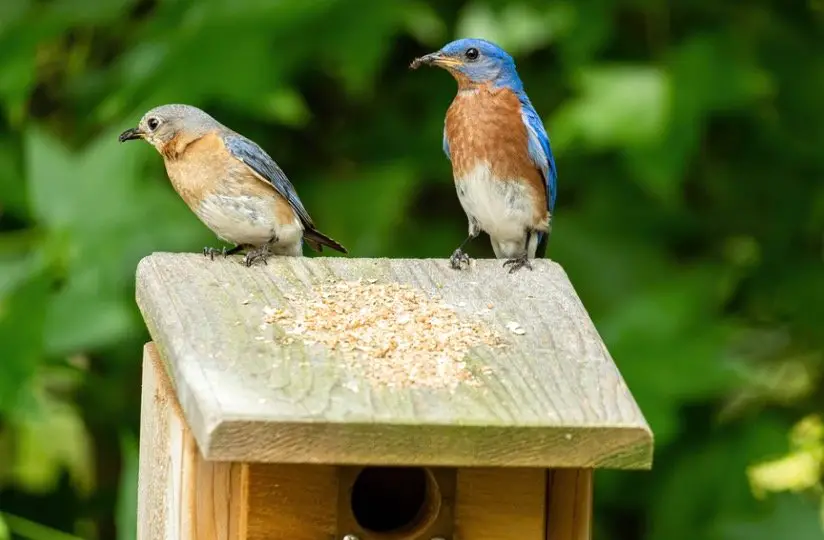
How to attract Bluebirds FAQ
It is very challenging to attract bluebirds to your garden. To attract bluebirds in your yard, well-maintenance and planning are required and they don’t show up accidentally. Bluebirds are songbirds and are helpful for pest control. According to a survey, around 68% of their diet is made of insects.
How to protect Bluebirds from predators?
Bluebirds don’t build their own nests. They take over cavities in trees and snags created by other animals, like squirrels and woodpeckers. But you can attract bluebirds to your yard by making sure you have some old tree stumps or similar spaces for them to move into.
Make sure there is plenty of room inside so that one pair of birds doesn’t end up on top of another pair, leading to territorial squabbles. To avoid attracting predators such as cats and raccoons, choose a location that is somewhat hidden from easy view but still easily accessible by bluebirds themselves.
Do Bluebirds migrate in winters?
Unlike most birds, which migrate south for winter, bluebirds are hardy creatures who will remain in their breeding grounds all year round. In fact, a few actually remain in their northern breeding grounds all year long—which is why it’s possible to attract one to your yard even in winter.
But if they sense a drop in temperature or other climate changes that may affect their survival, they’ll often move away from a given location—sometimes across hundreds of miles—to escape those conditions.
If you live where bluebird sightings are common in winter, there’s a good chance they’re coming to your backyard specifically because you have deciduous trees nearby; these are prime bird feeder perches and excellent nesting spots come springtime. Another factor that may attract these birds to your backyard is having some source of water readily available.
What food attracts Bluebirds?
Bluebirds are attracted to a wide variety of native wildflowers and shrubs, but their diet is primarily made up of insects. Since seed can’t provide them with sufficient protein, it’s important to leave enough insects in your yard so that they don’t need to feed on seed or fruit.
To attract bluebirds into your yard, plant insect-friendly plants like butterfly weed, asters and goldenrod. They also like sunflowers, nasturtiums and marigolds. However, you should avoid planting these near birdfeeders—they can encourage backyard birds to linger around your home instead of exploring new territory.
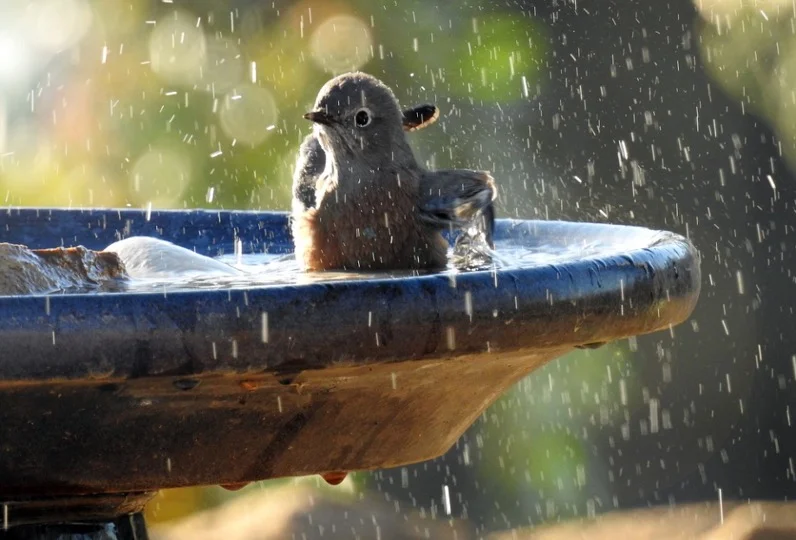
Do Bluebirds like water?
Whether you’re hoping to attract a pair of birds or just observing them from afar, remember that bluebirds need access to water. You can create birdbaths by lining a shallow bowl with pebbles and filling it with fresh water daily (or change out an existing container). Be sure to choose an area near your feeders, as bluebirds will prefer larger bodies of water. In addition, don’t forget to clean bird baths regularly, as dirty bowls can lead to illness in wild birds.
What kind of nest box should I buy or build?
As cute as they are, bluebirds don’t build their own nests. So you’ll have to make a nest box! If you buy one, look for an entrance hole that measures between 1 1⁄2 and 2 inches in diameter (2.5-3 cm), which is large enough to accommodate bluebird parents but small enough to prevent entry by predators like raccoons. Also make sure it isn’t so deep that your feathered friends can’t climb out.
Where should I put a Bluebird box?
If you’re hoping to attract bluebirds to your yard, you’ll need a place for them to set up their bluebird box. However, they are pretty particular about where they choose to live—in fact, it’s not uncommon for some birds to pick a site and build more than one nest box.
Because of their finicky tendencies, it might take some time before you get a pair of bluebirds nesting in your yard. But if you put your box in an area that is appealing to them—far away from predators such as cats and crows, but close enough that they can easily find food and water—you may have better luck!
Do Bluebirds like winter?
If you live in a cold climate, it’s unlikely that bluebirds will stick around all winter. They’ll migrate to a warmer spot where they can have an easy time finding food and other birds of their kind. If you want to attract bluebirds and other feathered friends to your yard, plant some native plants with berries and insects (hanging plants are good for attracting nectar-eating birds) throughout your property during spring and summer. Then scatter some seeds on snowy or rainy days so they don’t freeze or get washed away by rainwater; cover them with mesh netting so they don’t get eaten by squirrels or other animals.
Are Bluebirds endangered?
No. However, there are a number of factors that threaten their health and population in general, such as habitat loss and pesticide use. Luckily, homeowners can do their part to help bluebird populations thrive by offering nesting spots in their yards.
